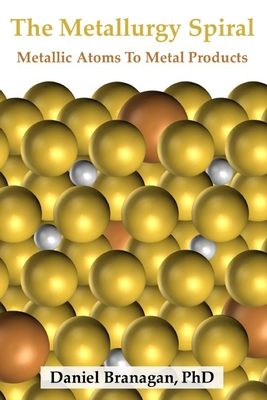Ever wonder why metallurgy is such a difficult subject to understand? At a loss trying to comprehend metallurgical concepts? The Metallurgy Spiral is a novel non-linear thinking approach, to both grasp and learn metallurgy and basic metallurgical principles, starting with metallic atoms and finishing with metal products. Through traversing the Metallurgy Spiral, a holistic view of metallurgy is gained incrementally starting with the atom and its basic properties, followed by alloying and alloy design strategies, continuing through melting and solidification approaches, progressing through industrial processing methods to produce unwrought semi-finished and wrought metal products, and moving onward through strategies and approaches used to optimize structure, resulting in the formation of specific combinations of properties needed for a finished metal product in its operating environment. This book is divided into three separate parts, which work synergistically to build knowledge and comprehension. Part 1 Metal Products and Markets provides a synopsis of the properties of metals, important industrial metals and alloys, metallurgical applications, and global trade in metals. Metals and alloys covered in this section include the top sixteen industrial metals including iron / steel, aluminum, chromium, copper, manganese, zinc, titanium, lead, nickel, zirconium, magnesium, tin, rare earth elements, molybdenum, cobalt, and tungsten. Part 2 The Metallurgy Spiral is focused on teaching and explaining basic metallurgy principles, covering important aspects of metallurgy, starting with metallic atoms, and finishing with metal products. Throughout the book, foundational metallurgical concepts are utilized while emphasizing applied and practical concepts to simplify complex concepts in metallurgy. Part 3 Detailed Metallurgy Of Selected Metals And Alloys applies this newfound knowledge and understanding to explain in detail the metallurgy of steels, aluminum alloys, and rare earth permanent magnet (NdFeB) materials. The approach used to teach the metallurgy of these complicated metal / alloy systems is to continue to use the novel non-linear spiral framework, consistent with the book's core teaching strategy. A wide variety of basic and applied concepts in metallurgy are highlighted and explained in The Metallurgy Spiral including fundamental properties of metallic atoms and alloys, influences and interactions of atomic scale, microscale, and macroscale defects, dislo










